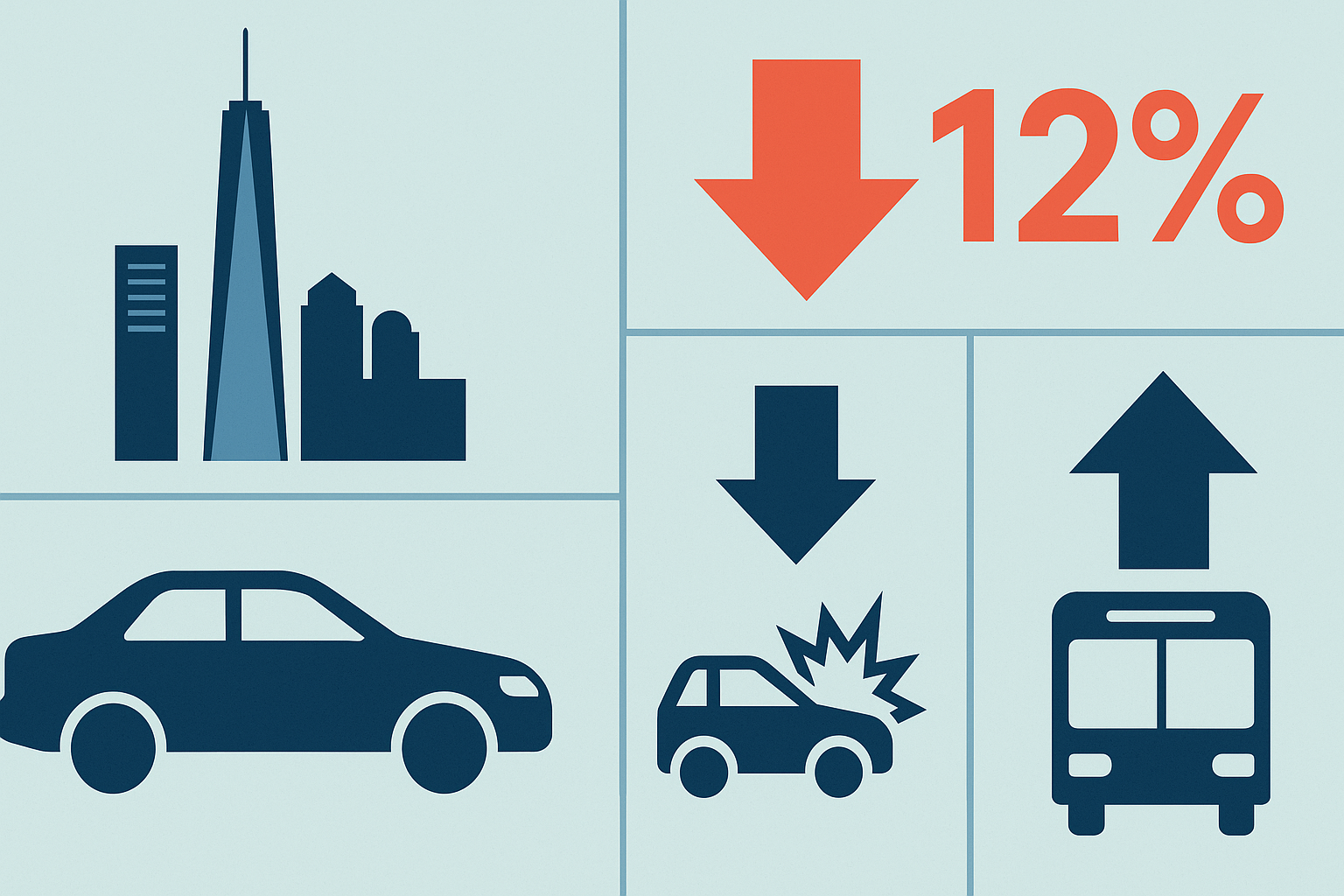New York City’s congestion pricing system, introduced in January 2025, has already produced significant changes in traffic patterns across Manhattan. City officials report that since the policy took effect, 17.6 million fewer vehicles have entered the borough — representing a 12% decrease compared to previous traffic levels.
The system requires drivers to pay a fee when entering Manhattan’s central business district during peak hours. It was designed to ease chronic congestion, improve air quality, and promote greater reliance on public transportation.
Early results suggest the policy is meeting its goals. Travel times at key crossings have shortened, while ridership on subways, buses, and commuter rail has increased, indicating that many New Yorkers are opting for transit instead of private cars.
In addition, city data shows a drop in traffic-related crashes and injuries, a development attributed to fewer cars on the road and smoother traffic flow.
Supporters view congestion pricing as a landmark transportation reform that not only alleviates gridlock but also provides a much-needed revenue stream to upgrade the city’s transit infrastructure. Critics, however, argue that the tolls impose an added financial burden on outer-borough residents and small businesses dependent on vehicular access to Manhattan.
Transportation analysts stress that the coming months will be crucial in evaluating the long-term effects of the program — particularly whether reduced traffic volumes will hold steady and if the revenue generated can meaningfully improve public transit.
For now, the numbers point to a clear shift: congestion pricing is reshaping commuting patterns in New York City, standing out as one of the boldest mobility initiatives introduced in recent decades.


